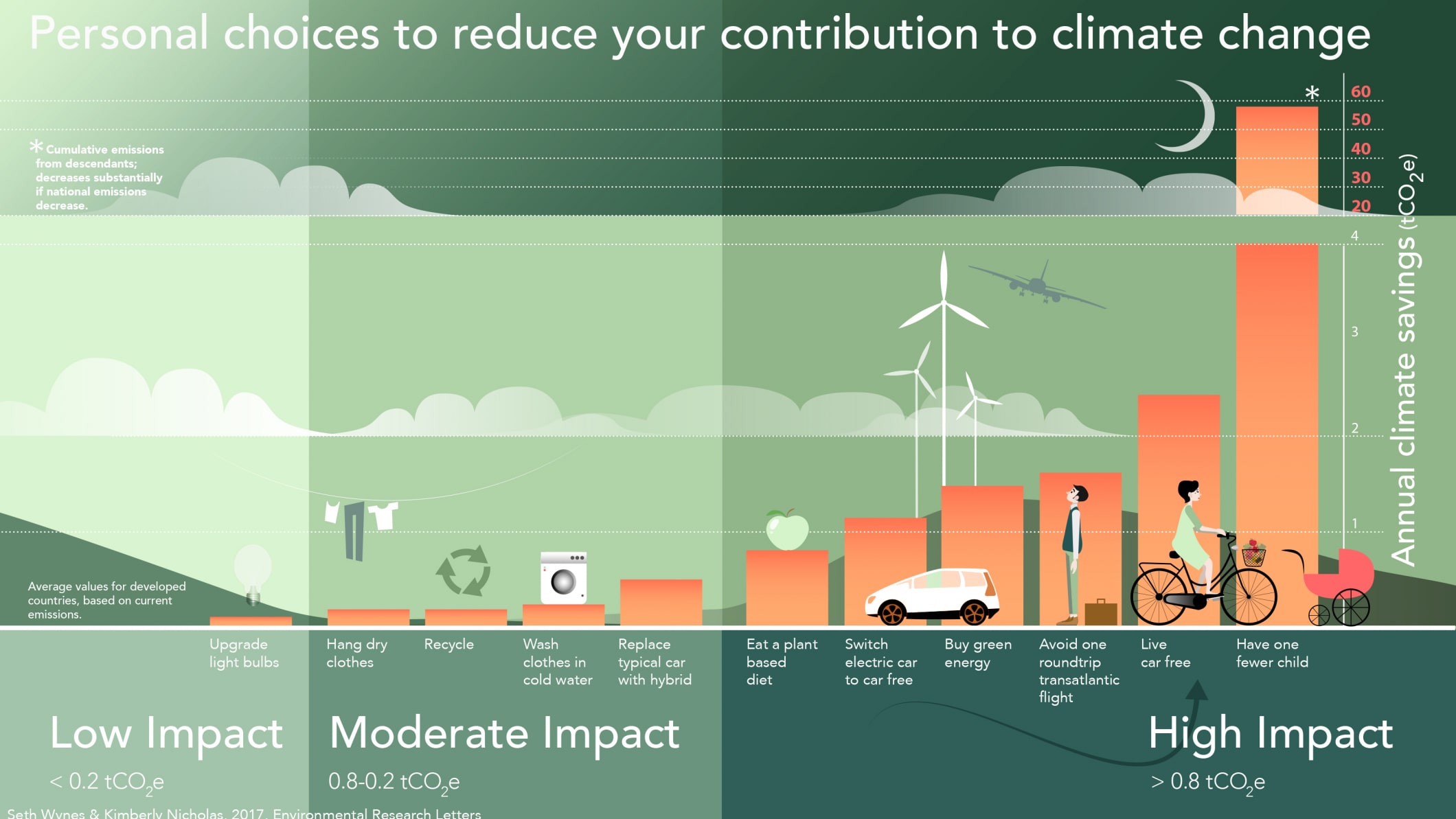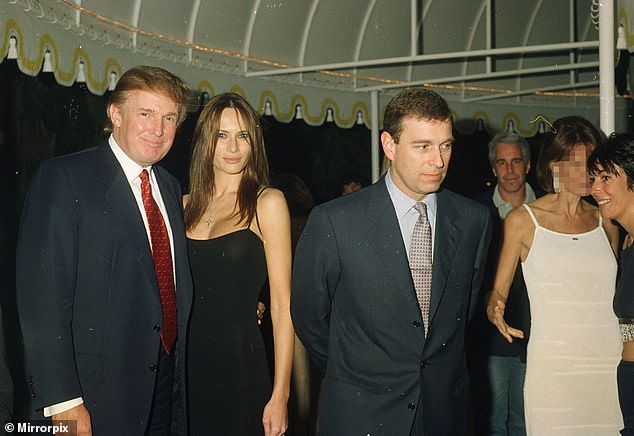 The four actions that would have the greatest impact on an individual’s greenhouse gas emissions: eating a plant-based diet, avoiding air travel, living car free, and having fewer children.
The four actions that would have the greatest impact on an individual’s greenhouse gas emissions: eating a plant-based diet, avoiding air travel, living car free, and having fewer children.Eating a plant-based diet saves about 4 times more greenhouse gas emissions per year than recycling. Avoiding just one transatlantic flight saves 8 times more, and living car-free saves 11 times more. Similarly, switching from plastic to canvas bags is less than 1% as effective for the climate as a year without consuming meat.
Avit K Bhowmik, Stockholm University
Europe’s major airlines are likely to see their turnover drop by 50% in 2020 as a result of the COVID-19 pandemic, while European airports expect to welcome 700 million fewer passengers. It’s a brutal shock to a global industry that, in the previous decade, grew by more than 5% a year on average.
Civil aviation – which includes all passenger and cargo flights – accounts for 2% of annual global greenhouse gas emissions. This might look pretty small, but this comes from only the 5% of the global population who can afford to fly. A transatlantic round trip can emit greenhouse gases equivalent to 1.6 tonnes of CO₂ per person. In other words, someone’s entire carbon allowance for the year.
As lockdowns are loosened, emissions are rebounding from many sectors. Aviation may follow the same path. After all, we live in a hyperconnected world and people still want to explore it, travelling as fast and as cheaply as possible, forgetting the cost this incurs to the climate.
But recent history suggests our attitudes may be more malleable. The Swedish flygskam (meaning, “flight shame”) movement of 2018 was led by a small group of celebrities, including Olympic winter gold medallist Bjorn Ferry and the musician Malena Ernman, who also happens to be climate activist Greta Thunnberg’s mother.
Their commitment to give up flying inspired hundreds of other Swedes. Spread through initiatives like the Facebook group Jag flyger inte – för klimatets skull (I’m not flying – for the sake of the climate), the campaign managed to lower the number of international flights at Swedish airports by 4% within a year.
How did these campaigners manage to force such a change in such a short period of time? And could their example show environmentalists how to leverage the COVID-19 crisis to permanently transform travel behaviour?
Tipping point
Along with a team of Swedish academics, I researched the flygskam movement to try to understand how it influenced people. We interviewed Swedes who had engaged with the campaign and reduced or even quit flying as a result. We also spoke to those for whom the campaign had little to no effect.
Science communicators are often rebuked for talking about the terrible consequences of climate change, for fear of depressing the motivations of ordinary people to act. But we found that negative emotions like fear and anxiety ultimately pushed the people we spoke to into action.
Besides giving up flying, many started making other adjustments, such as growing their own food. Many reported a deep unease that had been haunting them for a while, but felt the urgency to finally act when they heard about the flygskam campaign.
Read more:
Climate change: yes, your individual action does make a difference
Those who didn’t reduce their flying didn’t appear to have internalised the severity of the crisis in the same way. Some perceived climate change as a distant threat that might not affect them.
So dread can sometimes be a powerful motivator when it comes to acting on climate change. But that was only half the story.
The people who gave up flying did not view their choice as a sacrifice. Far from giving up something important to them, most spoke about the decision as a kind of liberation – a transformation towards a life with less stress.
Air travel boosts individual emission levels higher and faster than any other activity. When so much of our engagement with climate change is based on anxiousness about our own role, giving up the single biggest individual contribution to the problem felt cathartic for many of those we spoke to.
Flying is central to a worldview that prizes convenience and speed. But as many people found during lockdown, a slower pace of life with fewer options can sometimes feel freeing, rather than limiting. Adopting a new worldview that cherishes local relationships and opportunities can, somewhat ironically, feel like expanding our horizons rather than narrowing them.
Flight alternatives
Trains are well placed to meet the demand for a slower, more scenic way of getting around post-pandemic. Already, sleeper train services across Europe have noticed increased demand. One musician we interviewed used to fly around the world to attend concerts and thought giving up flying would affect his career. Now he manages to only perform in places he can reach by train, and he says he enjoys the change.

European overnight train operators have reported increased demand since the end of lockdown. Flystock/Shutterstock
Read more:
Could sleeper trains replace international air travel?
But changing the worldview of travellers will only be part of the solution. We spoke to plenty of frequent flyers who were determined to reduce flying, but couldn’t commit because of the lack of alternatives. In most cases, there were no train connections between the places they wanted to travel, and even if there were, they were likely to take up to ten times longer than a flight, and be substantially more expensive.
Expanding the rail network and subsidising train travel so that more people can afford it will be vital for any transition away from widespread air travel. Our research shows that many people are already eager to make this leap and stay grounded, but their ambitions are limited by their careers, family and other commitments that keep them tied to long-distance travel. A slower pace of travel can be popular, but it won’t be possible for many without investment and reform.![]()
Avit K Bhowmik, Assistant Professor, Karlstad University, and Research fellow in Planetary Boundaries Research Network, Stockholm University
This article is republished from The Conversation under a Creative Commons license. Read the original article.




21 Comments
Pingback: The richest half are responsible for 90% of air travel CO2 emissions - Bergensia
Pingback: ราวตากผ้าระเบียง
Pingback: Amazon Associates
Pingback: bonanza178 link alternatif
Pingback: แผ่นซับเสียง
Pingback: ketamin
Pingback: https://atlantic-grp.ru/wp-content/uploads/2015/12/8229.html
Pingback: ตู้เชื่อม
Pingback: SLOT NEW สามารถเข้าเล่นได้ที่ LSM99LIVE
Pingback: ออกแบบตกแต่งภายในบ้านหรู
Pingback: check my blog
Pingback: nustep t4r used for sale
Pingback: สล็อตเว็บใหญ่ทุนหนา โบนัสแตกเท่าไหร่ ถอนได้ไม่อั้น
Pingback: ufabet789
Pingback: wcasino
Pingback: กติกาบอลสเต็ป
Pingback: สล็อตออนไลน์เกาหลี
Pingback: ทัวร์ยุโรป
Pingback: certified translation chiang mai
Pingback: rainbow 6 esp
Pingback: showusurjunk.com